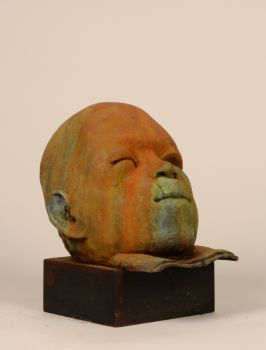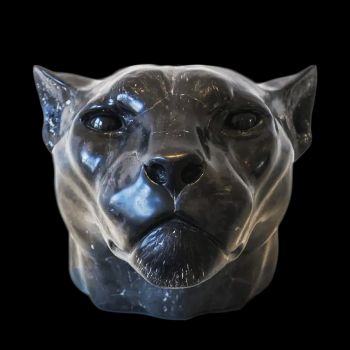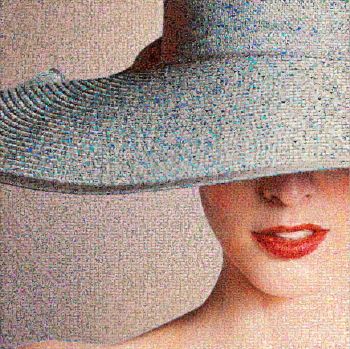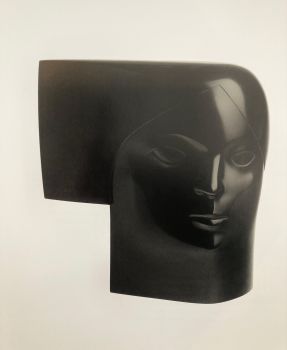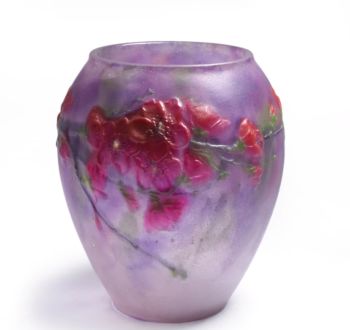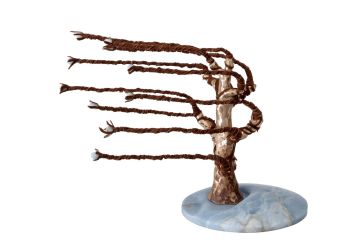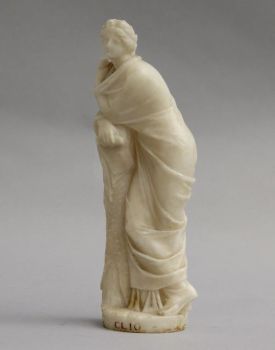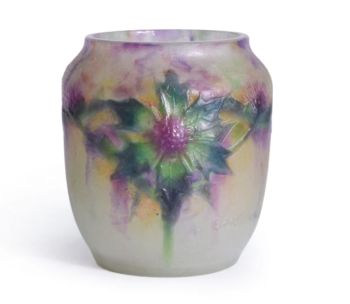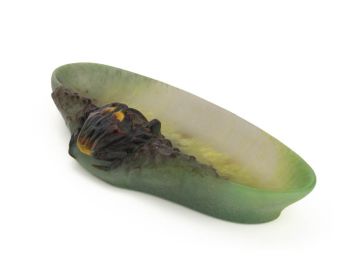An alabaster figure of a reclining Buddha 1800 - 1850
Unknown artist
AlabasterPâte de VerreGlassGemstone
65 ⨯ 14 cm
ConditionExcellent
€ 5.500
Famarte
- About the artworkThis medium large, reclining Buddha is from Mandalay, northern Burma (Myanmar). Carved lying on his right side in parinirvana, backed by a pillow, with his hand supporting his head. His clothes are gracefully draped around his body.
The form of this depiction of the Buddha is particularly youthful, somewhat languid, and almost feminine. The face is delicate and well modelled, the facial features – the open eyes, the high eyebrows and the full lips – are characteristic for this serene, dreamily contemplative Buddha.
A wide plain band borders the forehead. Small curls cover a full usnisha that terminates in a dome. The ears are long, curve slightly and touch the shoulders.
The reclining posture is a major iconographic theme in Buddhist art. It represents the historical Buddha during his last illness, about to enter the parinirvana. - About the artist
It might happen that an artist or maker is unknown.
Some works are not to be determined by whom it is made or it is made by (a group of) craftsmen. Examples are statues from the Ancient Time, furniture, mirroirs, or signatures that are not clear or readible but as well some works are not signed at all.
As well you can find the following description:
•“Attributed to ….” In their opinion probably a work by the artist, at least in part
•“Studio of ….” or “Workshop of” In their opinion a work executed in the studio or workshop of the artist, possibly under his supervision
•“Circle of ….” In their opinion a work of the period of the artist showing his influence, closely associated with the artist but not necessarily his pupil
•“Style of ….” or “Follower of ….” In their opinion a work executed in the artist’s style but not necessarily by a pupil; may be contemporary or nearly contemporary
•“Manner of ….” In their opinion a work in the style of the artist but of a later date
•“After ….” In their opinion a copy (of any date) of a work of the artist
•“Signed…”, “Dated….” or “Inscribed” In their opinion the work has been signed/dated/inscribed by the artist. The addition of a question mark indicates an element of doubt
•"With signature ….”, “With date ….”, “With inscription….” or “Bears signature/date/inscription” in their opinion the signature/ date/ inscription has been added by someone other than the artist
Are you interested in buying this artwork?
Related artworks
Unknown artist
A MARINE IVORY NETSUKE OF A DUTCHMAN HOLDING A CHINESE FAN18th century
Price on requestZebregs & Röell - Fine Art - Antiques
1 - 4 / 12Unknown artist
The bell of the VOC fortress in Jaffna, Sri Lanka1747
Price on requestZebregs & Röell - Fine Art - Antiques
 Curated by
Curated byDanny Bree
1 - 4 / 12- 1 - 4 / 24
Gabriel Argy-Rousseau
Gabriël Argy-Rousseau – Crabes et Algues vase – 19201920 - 1929
Price on requestAntiques Emporium
Amalric Walter
Amalric Walter & Henri Bergé – Crabe plumier1920 - 1929
Price on requestAntiques Emporium
1 - 4 / 24- 1 - 4 / 7































